Since the day tractor manufacturers moved from steel wheel traction to tire on wheel configurations, farmers have added tractor tire fluids to their equipment to add traction weight, counterbalance and to lower their center of gravity to reduce the possibility of tipping. (Ed Note: Tractor ROPS come standard with most machines these days, but the goal is to avoid using them.) Years of trial and error has changed the material offerings and methods, but not by much.
Do you have good tires but still have a hard time gaining traction on loose or wet surfaces? Adding downforce with tractor tire fluid can assist in gaining traction on slippery surfaces. Some 4×4 tractors have a high center of gravity thanks to their tall tires and axle clearance and adding ballast to your tires can help lower that center of gravity, an important consideration if you’re operating on a grade.
Many of the best small farm tractors come with bucket loaders now, which are exceedingly useful around the farm and homestead. That’s something you’ll want to add to your list of farm tools and equipment when you’re considering what tractor and machinery to purchase. Many people quickly find the maximum weight they can lift and for those of us who have been there, you know that unnerving feeling of your rear tires lifting off the ground, adding ballast to your rear tires, or aft of your rear axle, will help overcome this problem and make your tractor safer to operate. If you use the 3-point hitch of your tractor to pull implements like a plow, and you find it hard to steer or the implement’s weight is pulling the nose of the tractor up, then loading the front tires will weigh your nose back down.
Adding tractor tire fluids to tires can negatively impact your tractor’s ride quality, especially when loading the rear tires, according to John Deere. In a Deere service recommendation sheet for tire loading, they suggest a preferred 40% volume fill for liquid ballast, but the long-standing tradition of tire loading is 75% fill, which is the maximum John Deere suggests. If you drive in high gear along roadways at or near top speed, the already harsh ride may get worse, but at low speeds, you are not likely to see a difference in the ride of your tractor. The old Oliver-White tractor we used to have on the farm came loaded with calcium chloride at 75%, and I felt no significant difference when we upgraded to our John Deere 5105 with no tire ballast, so I personally have no concern about affecting the “ride quality” of our tractor.
If you drive in high gear along roadways at or near top speed, the already harsh ride may get worse, but at low speeds, you are not likely to see a difference in the ride of your tractor. The old Oliver-White tractor we used to have on the farm came loaded with calcium chloride at 75%, and I felt no significant difference when we upgraded to our John Deere 5105 with no tire ballast, so I personally have no concern about affecting the “ride quality” of our tractor.
Farmers will always be a breed of their own, but rest assured they will find the cheapest and/or most rugged way to achieve something, and tractor tire fluids are no exception. Some common materials include water, calcium chloride, antifreeze, windshield washer fluid, beet juice and polyurethane foam.
When you need a tractor with great stability and a smooth ride, trust Bobby Ford Tractor and Equipment to offer a complete line of Kubota tractors built to work with any terrain. Contact us today for a quote on your next tractor.
Contact us today for a quote on your next tractor.
Water
It’s cheap and easy, but it freezes. This is a deal breaker for a lot of people since blocks of ice make it feel like you have a flat in your tread, and when ice expands it can push the tire off the rim. If you live in the deep south, then maybe you can get away with it, but here in New England, it’s a big no-can-do.
Calcium Chloride
Calcium chloride is usually sold in a flake form. You mix it into water and the solution resists freezing down to around -50°F. Calcium chloride was the go-to fluid for ages, but it’s notorious for rusting wheels into oblivion. Obtaining the raw material can be an affordable venture, but replacing the wheels down the road will not be, however, there are people who still use it because it can be cheap and the solution weighs around 40% more than plain water. I don’t personally suggest calcium chloride, but it is an option.
Antifreeze
If I was to load the tires of our John Deere, I would likely use this method.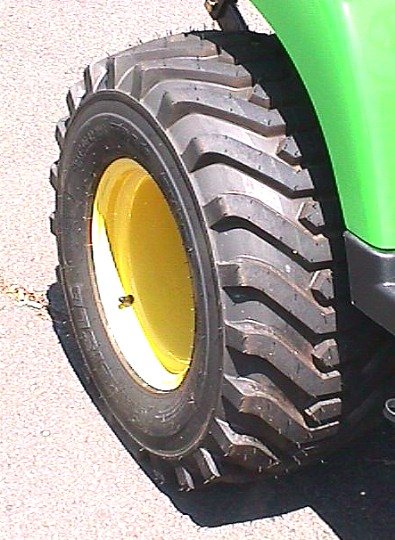 Antifreeze is easy to come by, albeit not all that cheaply. Ethylene Glycol is toxic, so regardless of the cost savings over Propylene Glycol, I would not use it. It takes very little Ethylene Glycol to kill a dog and honestly, I love my dog too much to take that chance. On that note, Propylene Glycol will work for the application, is nontoxic and is commonly marketed as pet safe. Propylene Glycol is also used by veterinarians as a bypass sugar, administering it to ruminant animals such as cattle to perk them up. Automotive antifreeze resists freezing down to around -40F and adds no weight to the water you’ll be adding it to (which is 8 pounds per gallon).
Antifreeze is easy to come by, albeit not all that cheaply. Ethylene Glycol is toxic, so regardless of the cost savings over Propylene Glycol, I would not use it. It takes very little Ethylene Glycol to kill a dog and honestly, I love my dog too much to take that chance. On that note, Propylene Glycol will work for the application, is nontoxic and is commonly marketed as pet safe. Propylene Glycol is also used by veterinarians as a bypass sugar, administering it to ruminant animals such as cattle to perk them up. Automotive antifreeze resists freezing down to around -40F and adds no weight to the water you’ll be adding it to (which is 8 pounds per gallon).
Windshield Washer Fluid
As I said, farmers will always find a cheaper, better or stronger way of doing things, and this is a perfect example. Automotive windshield wash fluid typically resists freezing down to -20°F, or -32°F for the winter blend, is easy to find and cheap to buy. Windshield washer fluid still only weighs 8 pounds per gallon, but hey, at least the insides of your tire and wheel will stay clean and streak free!
Both windshield washer fluid and automotive antifreeze are easy to come by. Shop your local auto parts stores and gas stations for the best price.
Shop your local auto parts stores and gas stations for the best price.Beet Juice
A fairly new product to the tractor tire fluid arena is a product sold under the name of Rim Guard. Rim Guard’s main ingredient is beet juice of all things and boasts a lot of positive points. The real selling points of beet juice are; it’s non-toxic, it’s 30% heavier than water, it resists freezing down to -35°F and the real kicker is that it’s noncorrosive, so it won’t eat your wheels for dinner like calcium chloride will. But as with everything, there is a flip side to Rim Guard, and that’s the price. Rim Guard can be a rather expensive product, especially if you’re filling a large tire. If you can afford the expense, this may be your best option by far.
Polyurethane Foam
Foam filling your tractor tires is a viable proposal, but an expensive one with some aggravating downfalls. Foam filling weighs up to 50% more than water per volume and offers you a no-flat tire that is sure to affect the “ride quality” of your tractor.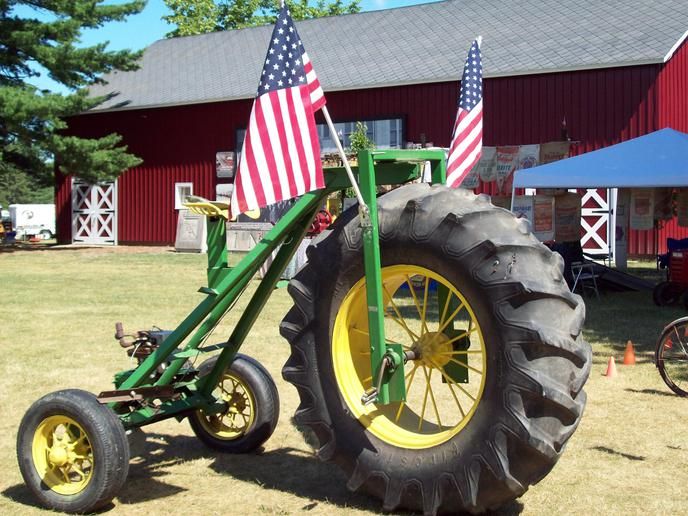 There are plenty of YouTube videos of homebrew DIY methods of foaming tires, but if you’re serious about loading a tractor tire, I highly suggest going to a dealership and having it professionally done. You will have to cut the tire off the wheel or buy new wheels when you want to change tires, so be sure to foam new or almost new tires so you get the longest tread life. Foaming your tires also means you can not adjust tire pressures or tire footprint, but by the same token, you never have to check your tire pressure, so it’s really a catch 22 situation.
There are plenty of YouTube videos of homebrew DIY methods of foaming tires, but if you’re serious about loading a tractor tire, I highly suggest going to a dealership and having it professionally done. You will have to cut the tire off the wheel or buy new wheels when you want to change tires, so be sure to foam new or almost new tires so you get the longest tread life. Foaming your tires also means you can not adjust tire pressures or tire footprint, but by the same token, you never have to check your tire pressure, so it’s really a catch 22 situation.
Support your axle to take the weight of the machine off the tires, deflate them and remove the valve core in the tire stem. There are plenty of devices and methods for loading tractor tire fluids, but the easiest would be using a filling device, a drum of fluid in the bucket of the tractor, a hose between the two and then raising the bucket, relying on gravity to do the work for you. If you want to fill to John Deere’s recommended 40%, rotate the tire stem to the 4 o’clock or 8 o’clock position and fill to the stem.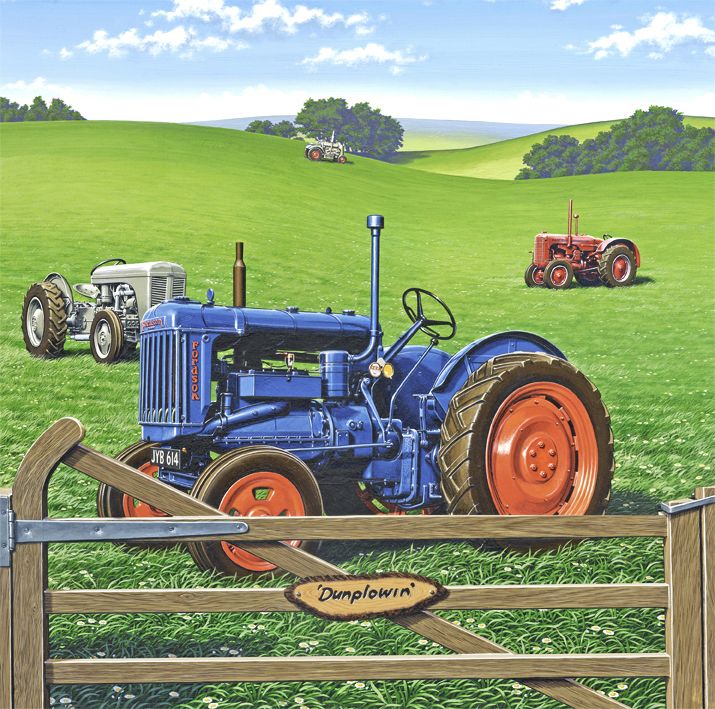 If you want to fill to the industry standard of 75%, place the stem at 12 o’clock and fill to the stem. Rim Guard has a handy tire size chart that shows you how many gallons to put in your tire, just remember that the chart shows the weight of their product so calculate whichever product you use based on pounds per gallon.
If you want to fill to the industry standard of 75%, place the stem at 12 o’clock and fill to the stem. Rim Guard has a handy tire size chart that shows you how many gallons to put in your tire, just remember that the chart shows the weight of their product so calculate whichever product you use based on pounds per gallon.
Do you use tractor tire fluids to add ballast? If so, what’s your favorite fluid to use and why?
######
About Bobby Ford Kubota, Texas:
If you’re in need of a reliable, well-balanced machine to help support your operation, Bobby Ford Tractor and Equipment has you covered. Bobby Ford is an authorized Texas Kubota Dealer serving contractors, landscapers, road crews, farmers, ranchers and others throughout Texas.
Their selection of Kubota tractors includes compact, sub-compact, utility, economy-utility, tractor/loader/backhoe, and specialty models. Bobby Ford has great deals on Kubota tractors that offer a variety of special financing, customer rebates, and more. Contact their team today for a quote!
Contact their team today for a quote!
I finally got around to putting ballast fluid in my rear tractor tires. This project was long over due. In this post, I cover the basics of tractor ballast, the different ballast fluids available, some different methods for fill your tractor tires and how I filled mine.
First, let’s talk about the basics of ballast. At a basic level, tractor tire ballast, whether in the form of fluid in the tires, or steel wheel weights, gives your tractor better rear wheel traction and both lowers the center of gravity as well as shifts it back toward the rear. A lower center of gravity makes your tractor less prone to tipping over on uneven terrain.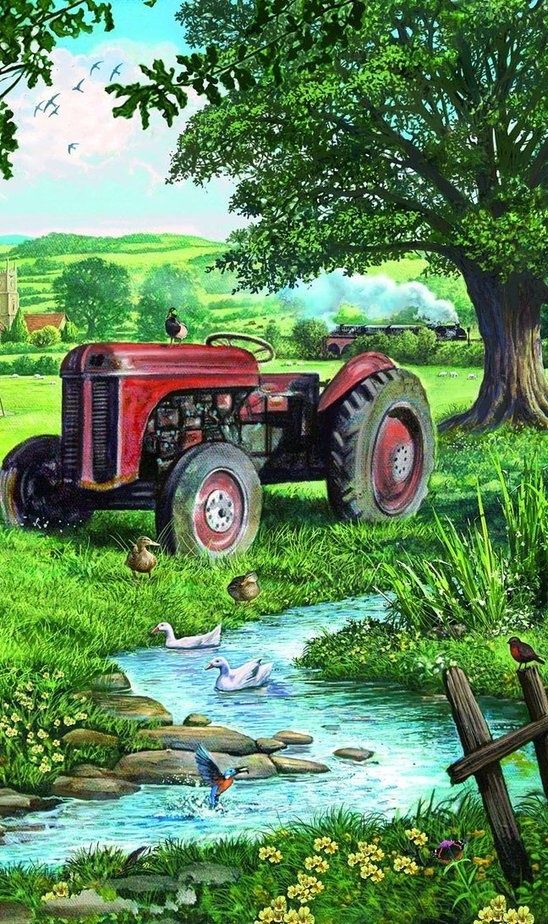
Having good rear ballast is especially important when you have a front end loader like I do. Front end loaders are very heavy. My Kubota LA525 loader weighs 805 lbs, and much of that weight hangs off the front of the tractor, making the front axle act as a fulcrum. The weight of the loader on the front subtracts from the effective weight on the back tires, and moves the center of gravity a lot farther forward.
A heavy load in the loader bucket magnifies this effect and in certain situations can cause the tractor to tip forward and possibly roll over leading to chaos, death and destruction.
Ballast in the rear tires helps to offset the weight of the loader and a load and moves the center of gravity back to a safer point. However, liquid ballast alone is not enough for safely carrying heavy loads in your loader. Adding a heavy implement on the 3 point like a ballast box or brush hog is the best way to ensure your tractor is as stable as possible.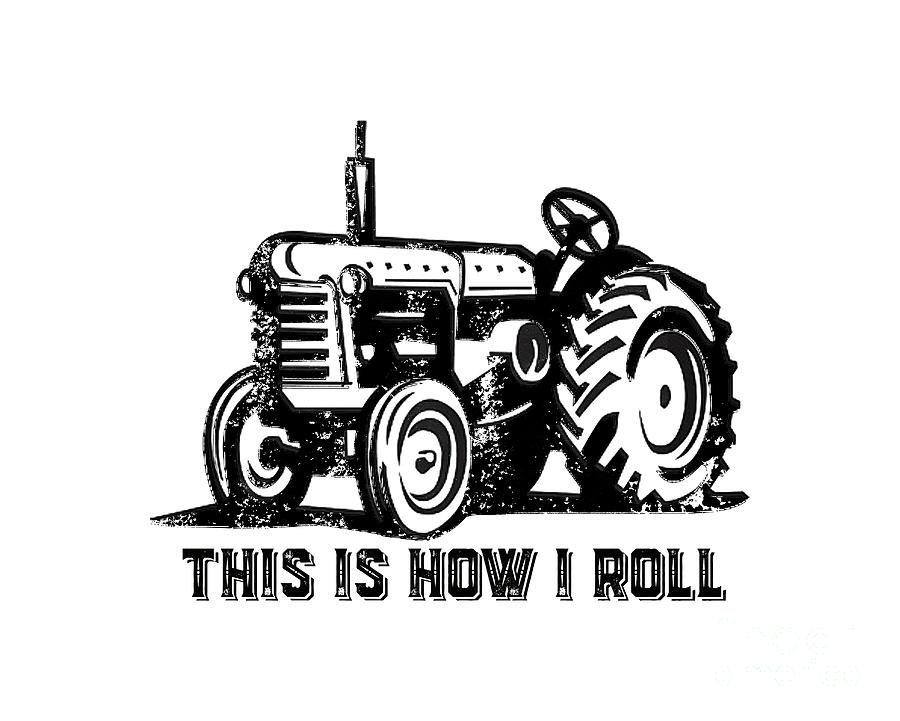
Now, which liquid ballast you choose depends on how cold it gets where you live, how much your willing to spend, and what is available where you live. There are several good resources online comparing the different liquid ballasts but one of the best that I have found is on the Orange Tractor Talks website. This chart summarizes the characteristics of the most common types liquid tire ballast. Below the chart, the article covers pros and cons of each type. I’ll just hit the highlights of each.
Water: Of course, water is the cheapest ballast since it is free, but offers no freeze protection and provides 8.3 lbs of weigh per gallon. So, you have to live in a warm climate to use water.
Calcium chloride: Calcium chloride is widely available can be cheap or expensive, depending on if your tires already have tubes installed or not. Mixed with water, it provides great freeze protection down to -50F and weighs a hefty 11.5 lbs per gallon, but it is highly corrosive and needs to be used in tires with tubes to protect your rims from rusting.
Ethylene Glycol: Ethylene Glycol antifreeze is the same kind that goes in your car’s radiator. It is a widely available, medium-priced solution that when mixed 50/50 with water, offers freeze projection down to -40F. And it weighs about the same per gallon as plain water. The main drawback is that it is very toxic to animals and actually attracts animals because it tastes sweet. So, if you get a leak in a tire, it’s not good news for critters.
Propylene Glycol: Propylene Glycol antifreeze has the same properties as ethylene glycol except that it is non-toxic. It is easy to get but expensive per gallon.
Windshield Washer Fluid: Windshield washer fluid is another popular ballast because of its wide availability and low cost per gallon. Used full strength in tires, it provides freeze protection down to -20F and weighs about the same per gallon as water. However, it is toxic to the environment, but at least it doesn’t attract animals.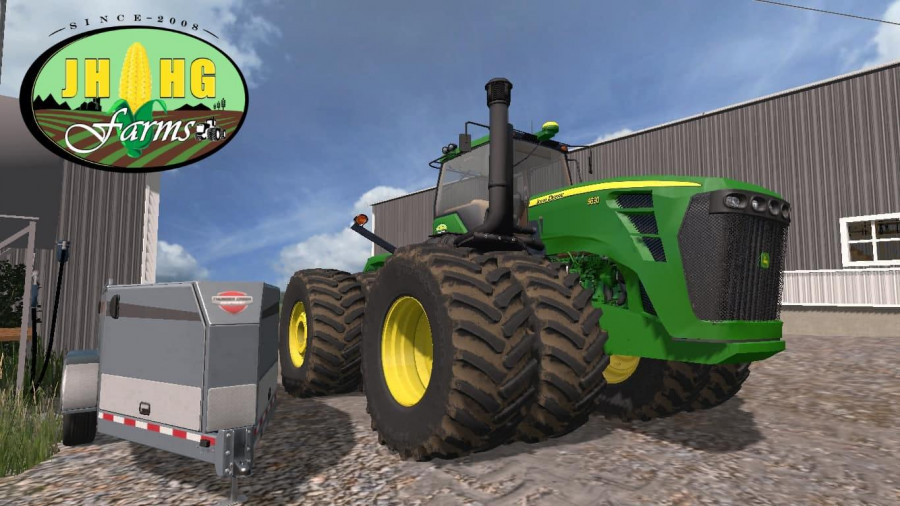
Methanol: Methanol is medium-priced, but highly flammable and must be mixed with water to minimize risk of explosion or fire. It is also toxic, but it can provide freeze protection down to -15F.
Beet Juice: Beet Juice is very expensive, but very effective, with freeze protection down to -35F and weighs almost 11 lbs per gallon. As a plus, it is completely safe and biodegradable. RimGuard is the most well-known brand however, it’s only available through dealer networks and predominately in the northern parts of the US. I can’t get it in Georgia.
Polyurethane foam: Finally, there is Polyurethane foam, which is very expensive, but is freeze-proof and can provide up to 12 lbs of weight per gallon. As a bonus, it makes your tires flat-proof. It is available through dealer networks. One downside worth mentioning is that it also makes for a rough ride on the tractor since there is no cushion in the tire.
I chose windshield washer fluid because of it lower cost and availability.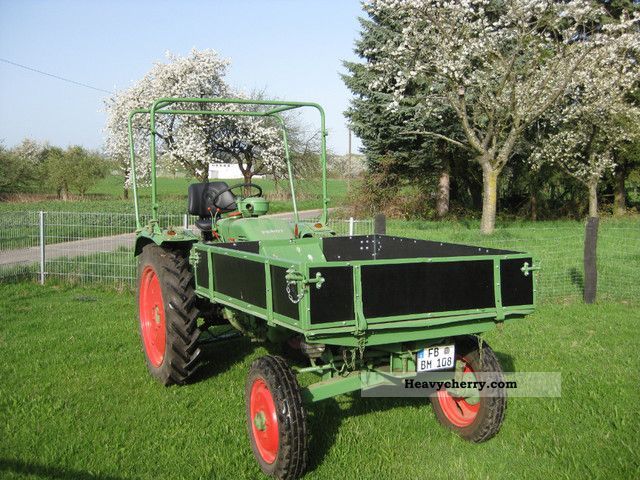
In particular, I bought Super Tech Windshield washer and de-icer, available at WalMart. Well, sometimes. It seems to be seasonably available. I paid $2.17 per gallon for 60 gallons, which was the best price I could find at the time.
So how did I know how much fluid I needed? That’s where tire ballast fill charts come in. You can find many of them on line. I like the RimGuard tire fill chart.
The chart shows the most common sizes of tractor tires, the number of gallons they hold at a 75% fill level, and the number or pounds added when using RimGuard. My rear tires are 15-19.5 R4s, which hold 29 gallons each at a 75% fill level. So, I need 58 gallons total but I bought 60 gallon in case of an oopsy or two. To get the weight per tire for the ballast fluid of your choice, simply multiply the gallons per tire of your size tire by the pounds per gallon of your ballast fluid. So, in my case it is 29 x 8.3 which is about 240 pounds per tire, or a total ballast weight of 481 lbs.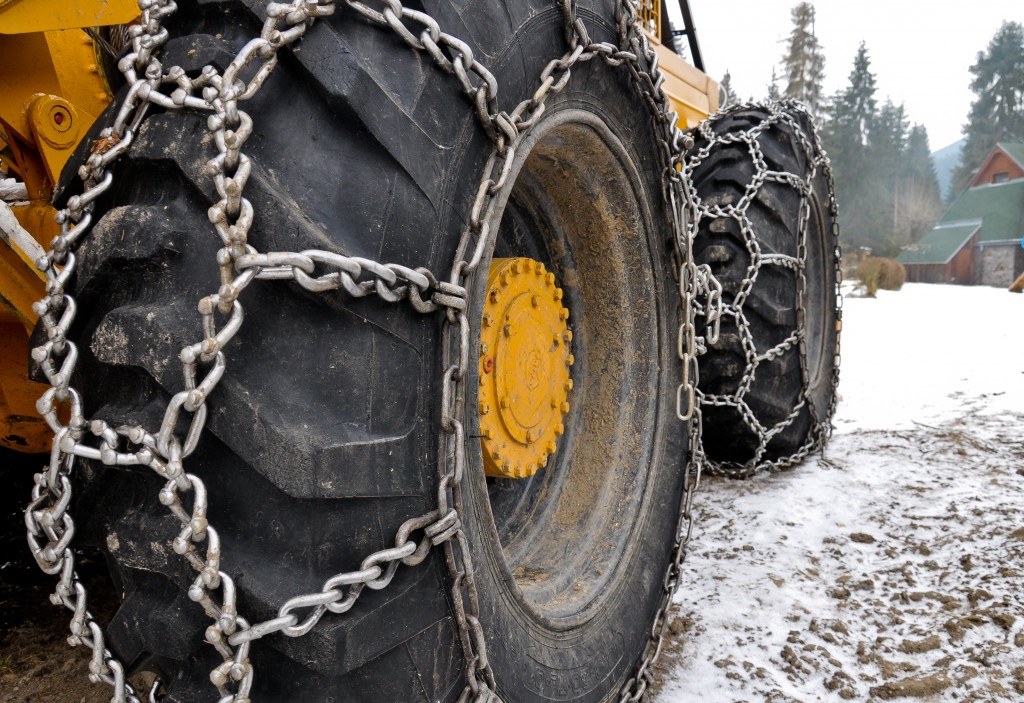
Now let’s get on with filling the tires. Your tractor should be parked on a flat and level surface. The first step is to safely take the weight of the rear tires. Now you can do this one at a time, but I chose to jack both up at the same time and you’ll learn why later in this article. You just need to raise the tires barely off the floor or ground. My jack stands are rated for 6 ton each so no worries about them not holding the weight.
The tire valve stem needs to be at the 12 o’clock position to fill the tire with fluid. You’ll need a tire valve stem tool to remove the valve core – slowly.
To fill the tires, you will need an air/water adapter kit. You can find them on Amazon or stores like Tractor Supply, which is where I got mine. They cost around $10.
There are several methods for loading liquid ballast into tires. I cover the full details in the video, but here are the basics.
Gravity Fill: The simplest is using a short piece of hose and a 5 gallon bucket that you can put in the seat of your tractor.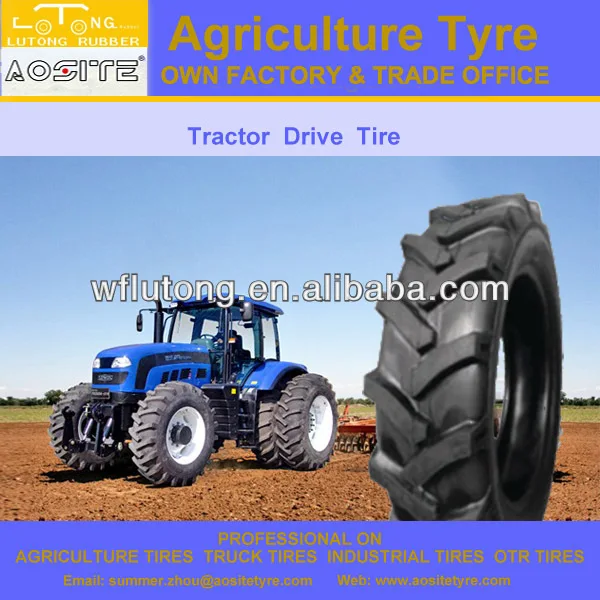 The hose is connected to the air/water adapter which is screwed tightly onto the valve stem. The other end of the hose sits at the bottom of the five gallon bucket and you start filling the bucket with the ballast fluid of your choice. Gravity does the work from here, but it can be slow going. Occasionally, push the air release button on the the air/water adapter to let the air escape and make more room for liquid.
The hose is connected to the air/water adapter which is screwed tightly onto the valve stem. The other end of the hose sits at the bottom of the five gallon bucket and you start filling the bucket with the ballast fluid of your choice. Gravity does the work from here, but it can be slow going. Occasionally, push the air release button on the the air/water adapter to let the air escape and make more room for liquid.
Transfer Pump: Another popular method is using a transfer pump to load the liquid ballast in the tires as shown in the pictures below. Transfer pumps with garden hose connections are available from many retailers such as Amazon, Harbor Freight and Northern Tool. I got mine from Amazon.
The pump speeds the process up and you just have to keep pouring liquid in the bucket and occasionally stopping the pump and releasing excess air from the tire. Note that transfer pumps are not supposed to be operated dry so priming it by filling the hose with liquid before turning it on is important!
Transfer Pump with Manifold: This method involves building a manifold that attaches to the air/water adapter and allows you to monitor the pressure and release air without wasting any fluid.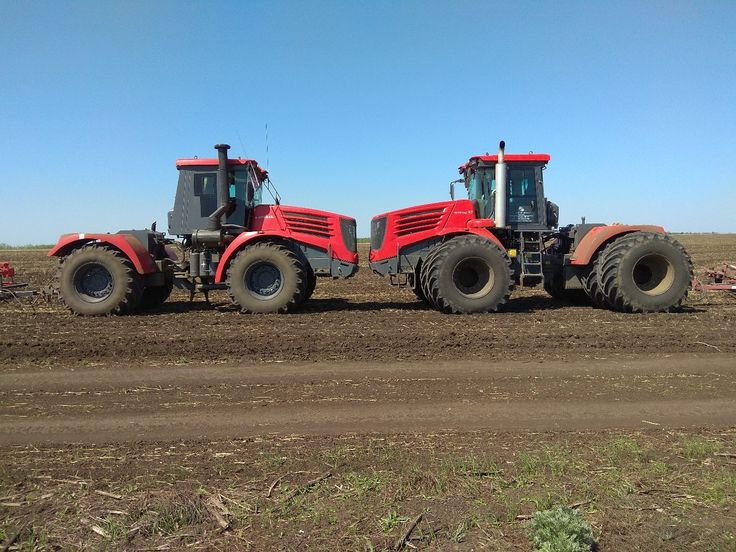 It is made of 3/4″ PVC pipe and common fittings available at hardware store. This idea came from David Dobb on his DaveKnowsHow YouTube channel and I thought it was brilliant, as so many of his contraptions are. I built my version of the manifold so that the hoses hang straight down to minimize stress on the valve stem.
It is made of 3/4″ PVC pipe and common fittings available at hardware store. This idea came from David Dobb on his DaveKnowsHow YouTube channel and I thought it was brilliant, as so many of his contraptions are. I built my version of the manifold so that the hoses hang straight down to minimize stress on the valve stem.
Here’s a closer look at the parts of the manifold. I use three, ¾” threaded PVC to garden hose adapters. Two garden hose valves. And a typical pressure gauge on the inlet side. Since this manifold is hopefully a one-time use device, I chose parts I could reuse elsewhere. In fact, the pressure gauge ended up replacing the one on our pool pump. I’ll keep the manifold body in case I ever have to fill tires again.
The hose connecting the manifold to the pump output side is a washing machine connector hose with female connections on both ends. The other two hoses can be whatever as long as they have a female connection on one end.
Before starting the pump, I fill the 5-gallon bucket with fluid and the prime the inlet hose.
The tire pressure quickly settled out at 20 PSI, which is perfect!
With the pump running, it was just a matter of keeping the 5 gallon bucket filled with fluid.
Note that the tires fill faster if you occasionally stop the pump, close the manifold inlet valve, then fully open the outlet valve to let excess air pressure out. You might want to pull the return hose out from the liquid as you do this so as to avoid blasting ballast fluid everywhere. Go ahead, ask me how I know this. Once the pressure is relieved, open the inlet valve, turn on the pump, and mostly close the outlet valve.
Once all the fluid is in, I can put the valve core back in the stem and pressurize the tire to about 20 psi, which is all that is needed for liquid filled tires.
So now the process needs to be repeated for the other tire. Again, the valve stem needs to be in the 12 o’clock position, but because I jacked up both rear tires, I can easily do this without moving the tractor.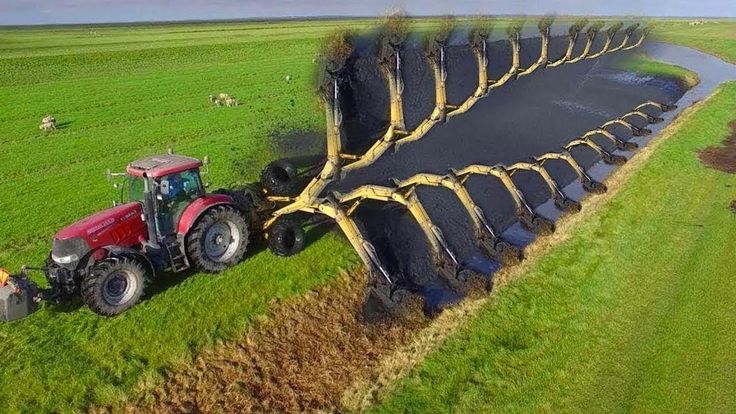 With the clutch locked in the pressed position and the range selector in neutral, I manually rotate the tire so that the valve stem is at 12 o’clock.
With the clutch locked in the pressed position and the range selector in neutral, I manually rotate the tire so that the valve stem is at 12 o’clock.
After filling the tire, I once again reinstall the valve core and pressurize the tire. Now I can safely take the tractor off the jack stands.
I must admit I put off this project because I was intimidated by it, but it turns out to be pretty easy to do if you are careful and have the right tools on hand. So if I can do it, you can do it!
Note: Links to Amazon products are Amazon Associate links that won’t cost you any extra, but will help support my efforts with a small commission on qualified products. Thanks for your support!
Like Loading...
Agriculture in Russia has been on the rise for the last 15-20 years after the rise in import prices in 1998, and over the past 10 years it has been developing at a very fast pace due to the emergence of numerous private farm enterprises.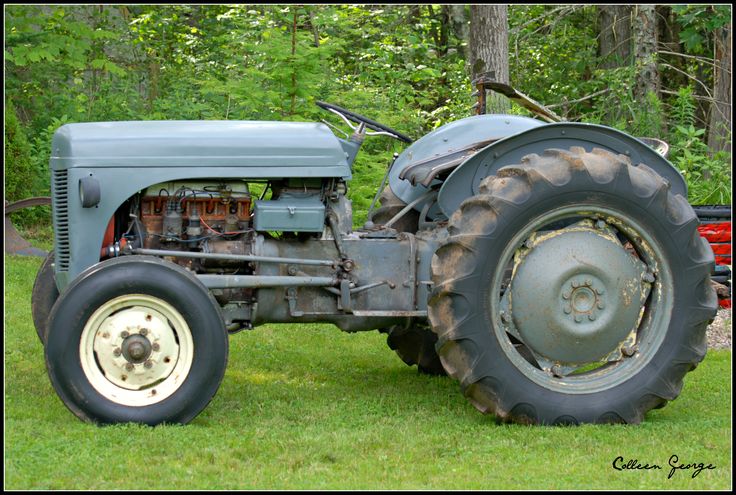
Of course, to cultivate a field of several hectares, heavy combines are not needed, which are designed to harvest thousands of tons of crops, but a farmer cannot do without a light tractor such as MTZ-82 or an analogue.
This equipment, like other vehicles, requires service and tire fitting, and many domestic companies provide owners with agricultural tires in a wide range.
Tires intended for use on agricultural machinery, unlike classic summer or winter products for passenger vehicles, have the following distinctive features:
Tires for MTZ-82 tractor
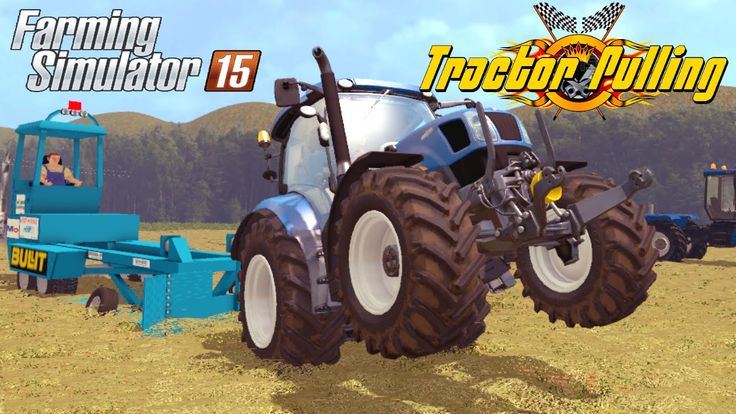
By purchasing high-quality agricultural rubber from a trusted supplier, the operator can be sure of its reliability with careful operation, and it will easily last 2-3 years in intensive mode. Herringbone tires for walk-behind tractor
Depending on the method of operation and purpose of a particular agricultural machine, rubber for it has several types.
So, when choosing all-season tires, the owner of the equipment needs to know the following basic parameters:
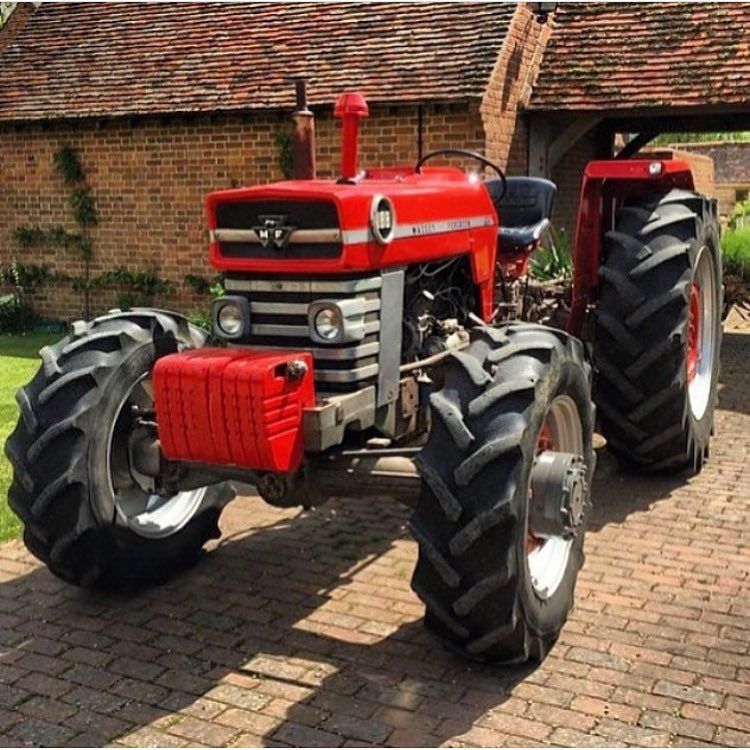 Guide tires are designed to quickly respond to the movement of the steering rod and are installed, most often, on the front axle. And load-bearing tires have an increased load index and are placed on trailers that play a small role in creating traction, but at the same time can carry heavy loads.
Guide tires are designed to quickly respond to the movement of the steering rod and are installed, most often, on the front axle. And load-bearing tires have an increased load index and are placed on trailers that play a small role in creating traction, but at the same time can carry heavy loads. You will be interested About Medved tires When purchasing a wheel for agricultural machinery, the owner must know exactly the operating modes of the machine, soil types, approximate load values and other technological parameters when cultivating the land or harvesting, and most importantly, the climatic features of the area where the tractor is working, harvester or other mechanism. Tires for motor cultivator
Of course, in 9In 9% of cases, agricultural machinery works in complete off-road conditions, where clay, peat, sandy soils or a layer of organic soil covers prevail.
For such cases, the tractor or combine must have increased cross-country ability, which depends entirely on the structure of the tires, therefore, when buying them, the owner of the equipment must pay attention to the following nuances:
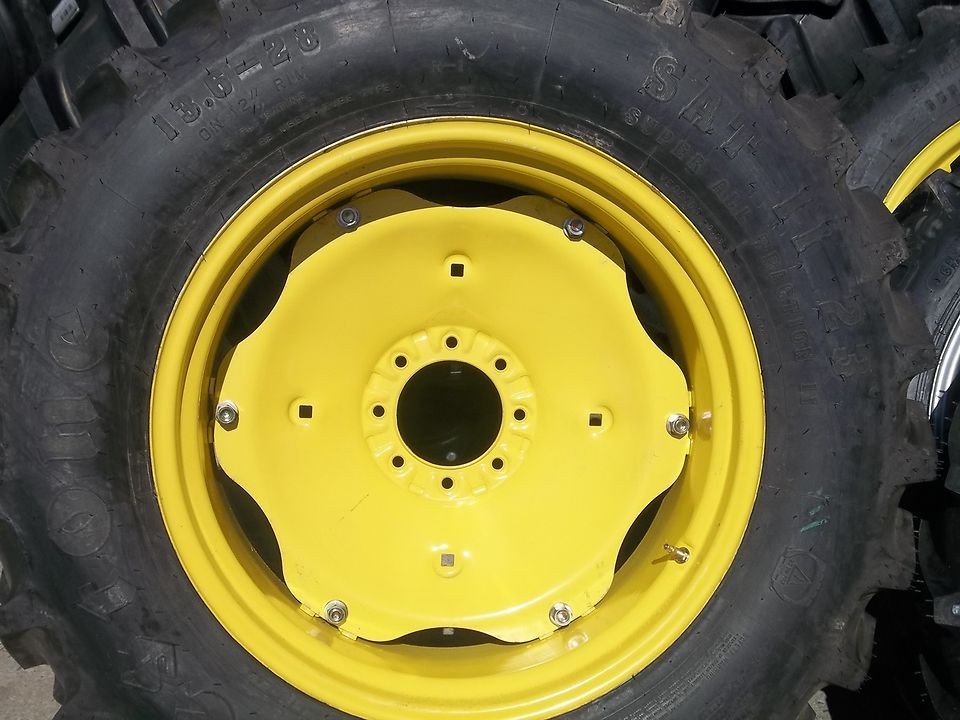 Also, many manufacturers of agricultural machines often use a number of recommended parameters that differ from those in the original.
Also, many manufacturers of agricultural machines often use a number of recommended parameters that differ from those in the original. 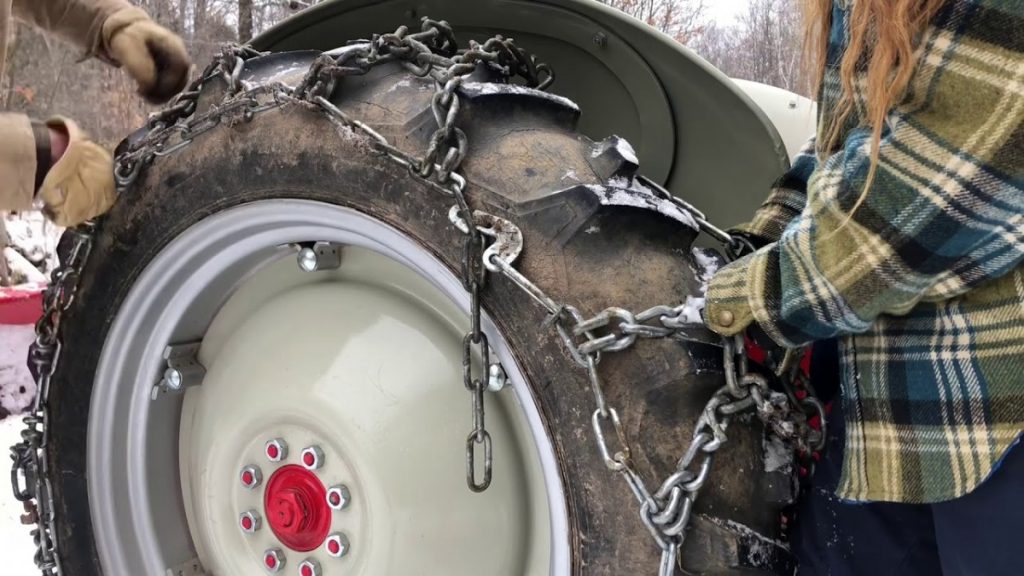
Tire for mini tractor
The last thing to know when choosing a wheel is the brand, because there are not many good suppliers of rubber for agricultural equipment in the Russian Federation that can satisfy the needs of operation under difficult conditions.
Companies such as Michelin, Titan International, Nokian Tires, Belshina and some other factories can offer the highest quality goods.
Most of them are located in the USA, China, Korea or Japan, but this does not mean that domestic products are of lower quality.
You will be interested About Westlake tires So, Russian manufacturers simply do not differ in innovations and often use the technologies of past years, this does not apply to those products that are produced domestically under well-known world brands, since the head office of the structure is always monitors technology and product quality.
It is worth noting that tires with a small radius (up to R16) and a herringbone tread shape are mainly used for idler wheels or in small-sized agricultural machinery.
So, for the choice of such agricultural rubber, amateur farmers who are not engaged in industrial production in agriculture most often apply.
The main parameters of this tire for tractors and agricultural machines are as follows:
Agricultural off-road tires

Of course, all the tire sizes listed above, as a rule, are only for small-scale mechanization, since even a small Belarusian tractor MTZ-82 has front guide wheels with a 24-inch radial, or VL 30 rubber is used.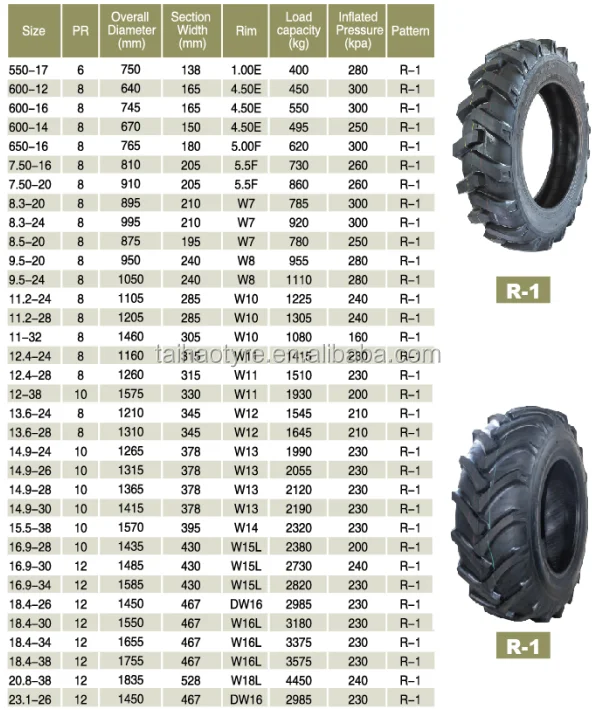 And a smaller dimension will not allow it meet the requirements for working in the field, provided that the crop is harvested in a commercial volume. Thus, if you put 16-inch agricultural tires on industrial equipment, then low ground clearance simply will not allow the machine to provide normal operation. Sale of rubber for special equipment
And a smaller dimension will not allow it meet the requirements for working in the field, provided that the crop is harvested in a commercial volume. Thus, if you put 16-inch agricultural tires on industrial equipment, then low ground clearance simply will not allow the machine to provide normal operation. Sale of rubber for special equipment
All agricultural and tractor tires are high-tech products designed for long-term intensive use, and owners of wheeled vehicles should remember that they simply cannot be cheap.
Thus, the multilayer construction of the rubber sole and sidewalls, reinforced reinforcement, a special chemical composition of the tread, the presence of stiffeners and other special characteristics form the cost of the product, which is most often 1-2 orders of magnitude higher than the price of ordinary tires for passenger cars.
Otherwise, when a potential buyer sees cheap options, most likely they will not be able to last long in difficult field conditions.
You will be interested Everything about tires Yokohama
Loading…
posted on the Internet.
Truck tire
Tires for agricultural machinery can be classified into:
Drive wheels must have an all-terrain tread pattern. Are established on a back axis of tractors, and also the operated wheels of combines. It is possible to install on the front axle of off-road tractors. Regulatory documents also allow the installation of such tires on the bearing wheels of agricultural machines and implements.
The steering wheels are mounted on the front axle of tractors and the rear of combines.
Bearing wheels are designed for installation on trailers and agricultural implements (machines).
High-quality operation of agricultural machinery cannot be ensured without the right tread. Tire manufacturers offer a wide variety of patterns.
Tire manufacturers offer a wide variety of patterns.
Agricultural tires "Herringbone"
Agricultural tires "Herringbone" in the catalog have index R-1. The tread pattern consists of 2 rows of ribs arranged at an angle. Initially, tire manufacturers used ribs located across the wheel, which greatly improved the traction of tractors.
However, the owners of the equipment, during operation, faced with strong vibration and a sharp increase in fuel consumption, as the tire did not roll, but overcame obstacles in the form of ribs. Vibration also led to frequent breakdowns of components and parts of tractors and combines.
Bridgestone designers proposed a solution to the problem by placing the ribs at an angle of 20-30 degrees relative to the wheel, which made it possible to have:

The disadvantages of the pattern appear only when driving on paved roads (gravel roads, asphalt):
Agricultural tires
Tires with a longitudinal rib are marked F-1. They are placed on the control wheels. Have:
Disadvantages include:
Agricultural tires with longitudinal ribs, unlike the F-1 tire, have two longitudinal ribs with a shallower tread depth.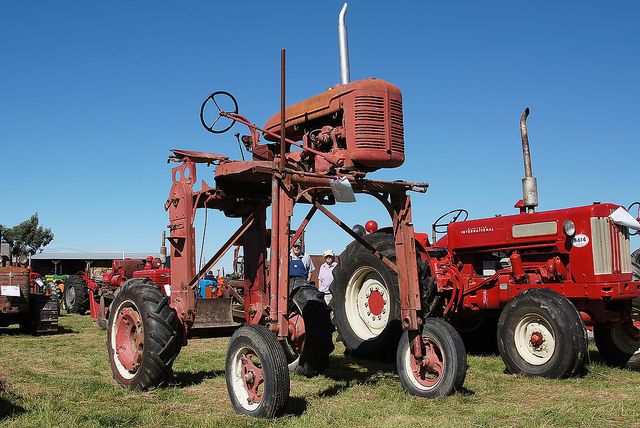 They were assigned the index I-1. The tire is intended for installation on trailers. Holds the road well, has a low specific pressure on the soil. Road abrasion resistant.
They were assigned the index I-1. The tire is intended for installation on trailers. Holds the road well, has a low specific pressure on the soil. Road abrasion resistant.
For reference: decoding tire indices:
I-1 tires have a subspecies, which can be conditionally called "longitudinal waves". They are put not only on trailers, but also on microtractors.
Agricultural Tire Stick
Herringbone tread has found its development in the pattern when the ribs resemble a stick. Hence the name - "Stick".
Changing the configuration of the rib retained the advantages of the parent pattern, and removed the disadvantages. On the road, the wheel works as the central part of the tread, on the ground with the help of side lugs.
Especially for agricultural machinery working on the roads, they began to use a pattern resembling checkers. The contact patch of such a tire is optimal, which saves fuel and increases wheel life.
The contact patch of such a tire is optimal, which saves fuel and increases wheel life.
The catalogs indicate the dimensions of agricultural tires in the old (inches) and new, metric indexing.
The ratio is as follows:
The current state of development of the agricultural industry makes a significant contribution in the fields of field work, machine operation and work speed. The modern design of road wheels and agricultural tires fitted to tractors, trailers and combine harvesters is significantly different from the tire construction model used in the early 1920s. In those days, agricultural tires were stiff, hard, and heavy, transferring their weight directly to the soil.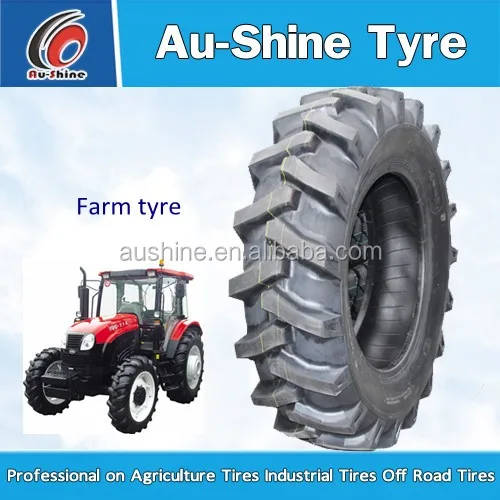 Soil compaction was significant, damaging the natural soil structure and significantly affecting crop quality. This was prevented with low pressure tires. which are currently produced, can significantly reduce the surface pressure on the soil, soil and reduce the slip of an agricultural tire, while reducing rolling resistance, as well as increasing the tire's resistance to punctures and other mechanical damage.
Soil compaction was significant, damaging the natural soil structure and significantly affecting crop quality. This was prevented with low pressure tires. which are currently produced, can significantly reduce the surface pressure on the soil, soil and reduce the slip of an agricultural tire, while reducing rolling resistance, as well as increasing the tire's resistance to punctures and other mechanical damage.
The design of agricultural tires has also led to the division of agricultural tires into areas of application depending on the operating conditions. We distinguish between tread classes:
Type R1 - characterized by very good traction properties, as well as decent parameters for self-cleaning agricultural tires. This so-called universal protector is used for almost all agricultural work, except for road transport.
Type R1 W - characterized by a 20% increase in tread depth compared to the R1 tread. This, of course, gives the best tractor traction in the field. However, the susceptibility to irregular tread wear is also higher compared to the R11 tread.
However, the susceptibility to irregular tread wear is also higher compared to the R11 tread.
Type R2 - agricultural tires with this tread have even greater tread depth than R1W or R1, their operation in places with muddy soil and muddy terrain. By using this tread in difficult wet terrain it gains significant traction and stretch, a 45 degree lean angle and an aggressive look.
Type R3 - agricultural tire tread, which is used where uniform ground pressure is required (trailers, grass haulers, etc.), is a common agricultural type, popular.
Type-R4 - In general, this protector is suitable for loaders. The R4 tread depth is 70% of the R1 tread depth.
Thus, when buying an agricultural tire, each user must consider the conditions under which the tire will be used. In case of doubt, please contact the professionals.
The TopDetal.ru online store offers a large selection of agricultural tires from trusted manufacturers.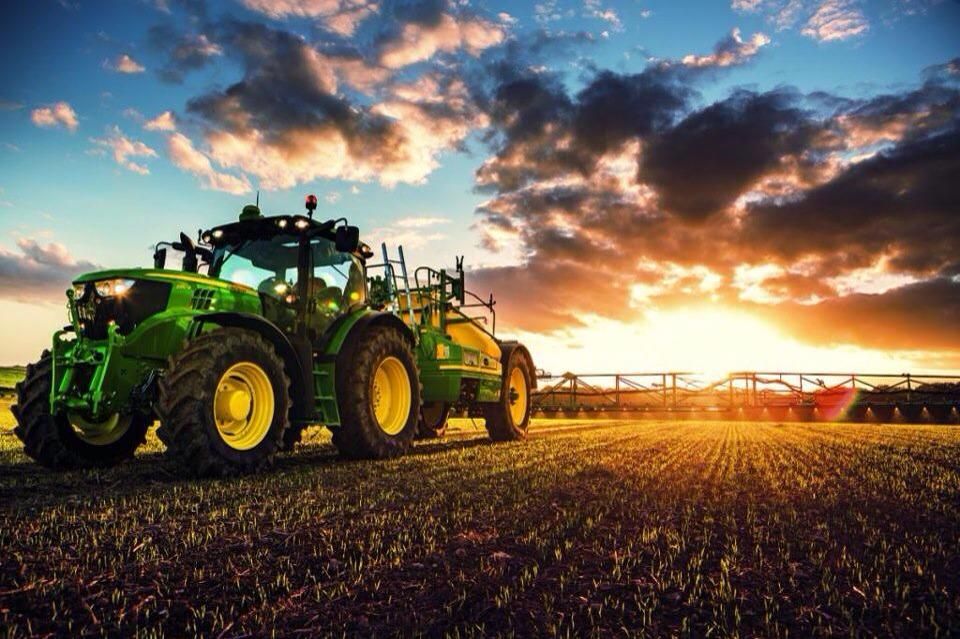 Agricultural tires are highly specialized products and need careful selection. We will help you find the components you need for agricultural machinery, which will ensure its high-quality operation.
Agricultural tires are highly specialized products and need careful selection. We will help you find the components you need for agricultural machinery, which will ensure its high-quality operation.
It is worth considering that the operation of heavy equipment is an energy-intensive process. Optimally matched tires for tractors, combines, trailers and other vehicles will reduce fuel consumption and increase their efficiency. Therefore, before buying, we advise you to determine the types of agricultural tires that are suitable for you, as well as familiarize yourself with the selection criteria.
Agricultural tires on the Russian market are divided into two types:

In our online store TopDetal.ru you will find both radial and diagonal agricultural tires from reliable manufacturers.
The selection of components for special equipment is a responsible task. Having studied the types of agricultural tires, also pay attention to the following points:
Optimally matched tires will improve the performance of vehicles in general:
TopDetal.ru guarantees the quality of sold agricultural tires and offers you convenient payment and delivery options.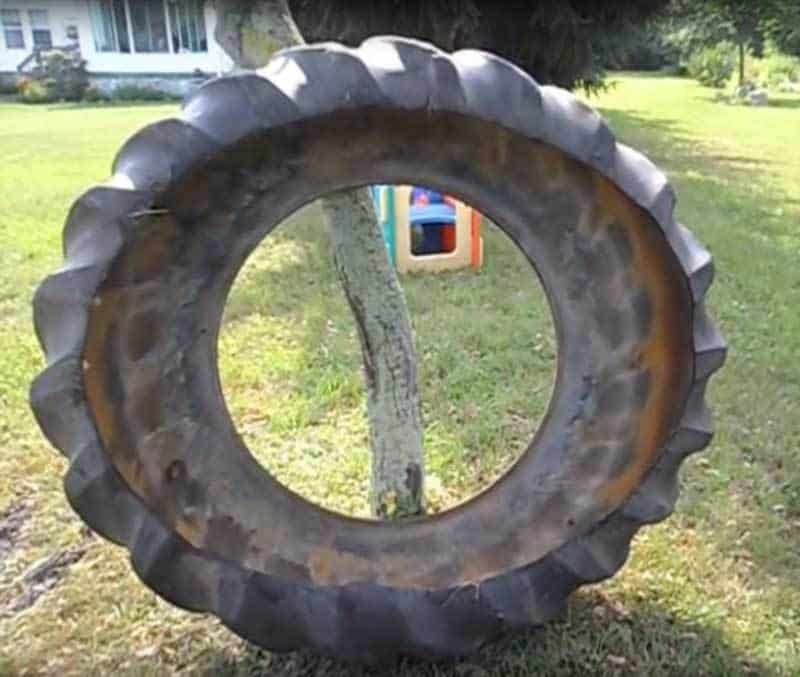 You may also be interested in different types of truck tires.
You may also be interested in different types of truck tires.
People who need to use tires often face the question of the difference between CX and industrial types of tires. Many believe that industrial rubber can be put on a tractor, the cost of which is several orders of magnitude lower. Is it so?
Industrial tires are installed on equipment, the operation of which is associated with heavy loads: construction, loading, attachments, special equipment. This requires a large margin of safety from rubber, as well as good grip on the soil, which cannot be said about tires that are installed on equipment working in the fields.
Industrial tires available with or without tube. The absence of a tube does not significantly affect tire endurance. Tubeless industrial tires are lighter in weight than tube tires, and their price is slightly less.
The use of tires for different tasks requires different methods of manufacturing them, which gives the rubber different characteristics. For example, in the manufacture of industrial rubber, artificial rubber and special additives are used.
For example, in the manufacture of industrial rubber, artificial rubber and special additives are used.
This provides industrial tires with a high level of durability and endurance. In addition, such rubber has a thick layer of cord made of rubberized material and steel.
This rubber has the ability to withstand heavy loads and adverse operating conditions.
Tire production requires several layers of rubber. The more layers, the more load the tire can withstand. Layering is an indicator no less important than endurance and wear resistance.
Speaking about agricultural rubber, its production has some differences in the technological process. As a result, their strength index is slightly lower, but the level of adhesion to the soil. If the tractor is shod with industrial tires, there will be a high degree of damage to the soil on which the equipment works.
It is also worth noting that these 2 types of tires also differ in tread pattern. In cx, the drawing can be a Christmas tree or a stream. The tread pattern of industrial tires is slightly more varied: herringbone, Z-like, stick, etc.
In cx, the drawing can be a Christmas tree or a stream. The tread pattern of industrial tires is slightly more varied: herringbone, Z-like, stick, etc.
Tire load index is also different. Industrial tires have a high load index. It is 50% more than agricultural. If these 2 types of tires are used incorrectly, it is possible that they may burst or the running gear of the equipment will be damaged.
In the manufacture of industrial rubber, manufacturers use a more expensive technology. The process of their manufacture is not only complex, but also multi-stage.
The high cost of industrial tires is also affected by the fact that the composition of rubber contains a greater number of components and additives, in contrast to agricultural tires.
Before being put on the market, industrial rubbers are tested using several testing methods. All these factors contribute to the increase in the price of industrial tires.
When buying tires, the following criteria must be taken into account:
Before making a final decision on the choice of one or another type of tire, it is recommended to read the instruction manual for the equipment on which the rubber is supposed to be used.
Manufacturers do not recommend the practice of interchangeability between expensive industrial tires and cheap agricultural tires. Each of the types involves the implementation of a certain list of works.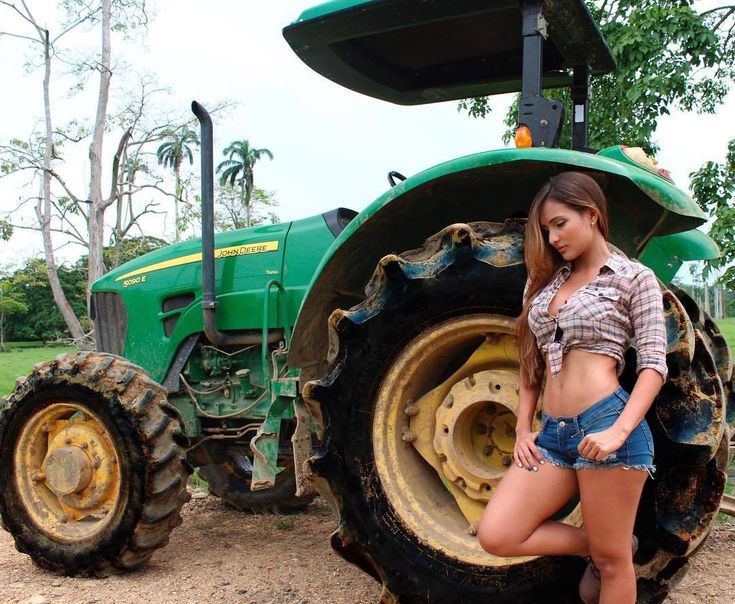
In case of replacement, the functionality of the tires decreases, the quality of the work performed, the time required to complete the task assigned to the equipment increases. Such "savings" will cost a lot.
CONSTRUCTION EQUIPMENT / TRACTORS
Agricultural tires designed for optimum performance in all working conditions. They are made for the agricultural sector and forestry, including short journeys on the roads. Before using them for any other type of work, the supplier should be consulted.
Never overload agricultural tires or use them when they are over or under inflated. If the weight per tire is unknown, refer to the tractor and tire manufacturer's instructions.
For tractor drive tires, maintain pressure at 20 psi (1.4 bar) when tractor is used as industrial or road travel, even when there is no or minimal load. Also see the specifications on the tire or ask the supplier.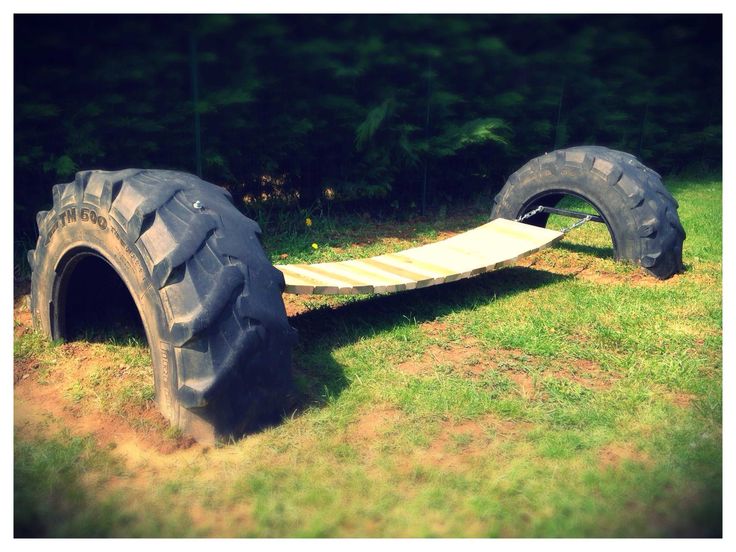
For field work, we recommend lowering the tire pressure to 16 psi (1.1 bar). If low pressure is required for a specific field job, be sure to raise it back to the normal required pressure after that job is completed.
Always use the recommended wheel size. If the rim you are using is narrower than the narrowest rim recommended, keep the tire pressure recommended for the rim, but reduce the tire load to the load allowed by one size smaller tire.
Always use a new tube with a new tire. The tube size must be identical to the tire size. Use an air-water valve for the driving wheels of the tractor.
Always follow the rules for installing and removing tires and make sure you follow safety guidelines. After installing the tire, inflate it to ensure a snug fit. Then completely deflate and inflate to the recommended operating pressure.
Remember: Never inflate tractor drive tires to more than 35 psi (2.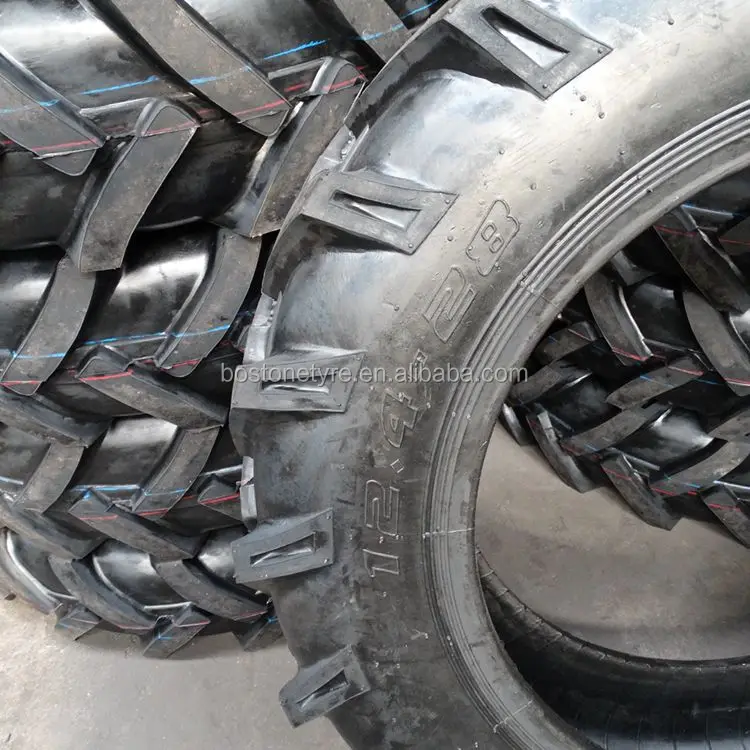 5 bar) when inflating to fit the tire.
5 bar) when inflating to fit the tire.
Do not store tires for more than a few months. The storage place should be dark and cool, free from dirt and oil products. Tires should be kept as far away from electrical appliances as possible.
When choosing a tire, consider the options that are most suitable for the job. Be sure to choose a tire of the size and ply rating (load index) acceptable for your equipment.
If there are several options, the tire with the lower inflation pressure is preferred. Once the tires have been selected and fitted to the machine, do not make modifications that will increase the weight of the machine.
When buying tires from a tire supplier, there are many things that are known only to experts.
To make sure your tires last longer and perform better, always keep them at the correct pressure. Keep in mind that it takes up to 24 hours for the tire to cool down after it has finished working.
For this reason, it is recommended to check and adjust the tire pressure after a long period of inactivity. In addition, tire pressure should be checked every month, and sometimes during the working day, bearing in mind that rising temperatures raise the pressure to 15 psi (1. atm.).
If the tire pressure is more than 15 psi (1. atm.) higher than the specified pressure, reduce the load or speed.
Never depressurize a tire during operation as this will increase the temperature rise. Close all valves with caps to prevent dirt from entering.
Tire load and tire pressures must be determined according to the transport shoulder (distance). It is necessary to take into account how many kilometers your tractor travels, and on what kind of soil.
Agricultural tires may be used for road traffic, provided the following rules are carefully observed:
- The maximum speed on the highway must be limited to 45 kilometers per hour (km/h). For wide profile tires, the speed is 30 kilometers per hour.
For wide profile tires, the speed is 30 kilometers per hour.
- Proper tire pressure must be checked and maintained according to the manufacturer's instructions or the tables on the tire manufacturer's website.
- A 30-minute stop must be made to cool the tires every 80 kilometers or after 2 hours of driving, whichever comes first. A minimum one-hour stop is recommended for a full day.
04.01.2016
Agricultural tires catalog
Always great attention was paid to the maintenance of agricultural machinery. Because the quality and convenience of work depend on the service. Also, more severe requests for operation and the choice of special tires for them are presented to agricultural machinery. When selecting tires, it is necessary to take into account a lot of characteristics of equipment and factors that will affect the special vehicle during operation.
In order to choose the right agricultural special tires, you must adhere to some rules:
 The right choice of lugs, depending on the condition of the soil, helps to complete tasks faster. The lugs are distributed at a suitable angle, having different widths between them.
The right choice of lugs, depending on the condition of the soil, helps to complete tasks faster. The lugs are distributed at a suitable angle, having different widths between them. For different types of work on agricultural machinery, different models of wheels are used. The tread pattern plays almost the most important role in certain jobs. For example, for trailer wheels that are mobile, a ribbed tread is suitable.
The tread pattern plays almost the most important role in certain jobs. For example, for trailer wheels that are mobile, a ribbed tread is suitable.
It maintains good directional stability even on loose surfaces and makes side sliding safer. On the drive wheels, multilateral or even sometimes knotty types of tires are mainly installed. They minimize the impact on the soil and are used on soft soils.
Directional traction special tire is mounted on the front wheels and in different weather, regardless of the difficulty of the terrain, they easily overcome any obstacles.
When choosing a special tire, it is very important to take into account the purpose of the equipment, as if, for example, it is calculated that the equipment will be under the influence of high pressure, then it is desirable to choose more elastic special tires. This will protect against unwanted punctures and cuts. So, as we know, an unscheduled wheel change is an undesirable expense.

If, for example, you choose a wheel for working in rice fields, you should choose special tires with a single ribbed pattern, as they clean up faster and keep the right direction on unstable soil.
3 or 4 ribbed tires mounted on the drive axle are perfect for different jobs and in all climatic conditions.
In order to avoid damage and breakdown of special vehicles, it is very important to choose the right agricultural wheels. The right special tires have a big impact on crop growth, causing less damage to the field and crops.
Agricultural tires catalog
Saving harvesting costs is impossible without good agricultural tires.
With the development of scientific analysis capabilities and the rapid advancement of modern technology, the variety of agricultural equipment, machinery, transportation and other technical devices has greatly increased in recent times, making life easier for the farmer.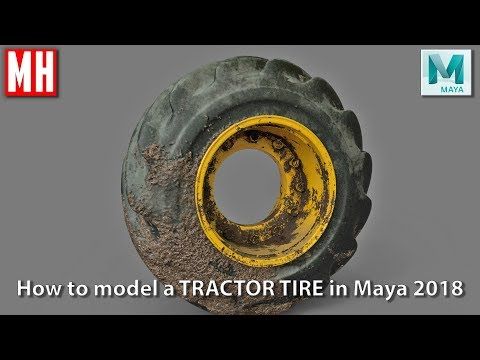
Accordingly, these developments have increased demand in the specialty tire market. Tires for agricultural machinery are no exception. Recently, the varieties of agricultural equipment, mechanisms and vehicles and, accordingly, the range of tires suitable for them for agricultural machinery have increased significantly.
Special tires to minimize soil damage during agricultural work: read here
In our online store there are many options for tires made in a diagonal and radial type carcass, with flotation, traction, road, ribbed treads, off-road tread, etc. Here we detail the application features a little. Radial tires are soft and will not suffer serious damage when driving on uneven surfaces. Diagonal - on the contrary, more solid and rigid in motion.
See also: optimal tread pattern for backhoe loader
Rubber tread pattern also plays a significant role in the daily operation of agricultural machinery. For example, a ribbed tread is suitable for mobile trailer wheels. It will provide excellent directional stability and grip even on loose rocky surfaces, and protect against side slipping.
For example, a ribbed tread is suitable for mobile trailer wheels. It will provide excellent directional stability and grip even on loose rocky surfaces, and protect against side slipping.
Knotted or multi-block tread can be installed on both driving wheels and moving wheels of agricultural machinery. These tires are an excellent choice for soft soil types because they cause minimal damage to the soil.
The directional traction protector is mounted on the drive wheels and provides flotation in various types of surface and weather conditions.
More about how to buy low pressure tires
In the selection of tires for agricultural machinery, an important criterion is the purpose of certain equipment. This may not be a cause for concern, but if you are looking for high pressure, then it is better to choose a more elastic tire to avoid damage and punctures.
And an unscheduled change of a tire for agricultural machinery is an additional unforeseen expense that everyone wants to avoid.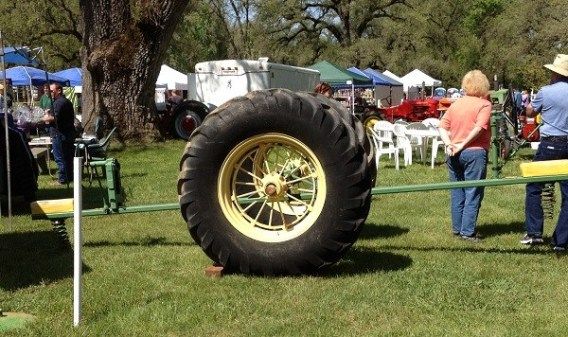 When you select a tire for working in rice fields, the tread of such wheels should be with a single rib pattern.
When you select a tire for working in rice fields, the tread of such wheels should be with a single rib pattern.
Agricultural tires with these characteristics clean better and hold their course on unstable ground. Three- or four-ribbed tires are mounted on the driving axle of the tractor and can be used for all possible types of robots in all weather conditions.
It is also important to understand that agricultural tires that are suitable for use during harvesting are not suitable for use during sowing.
The right choice of tires for agricultural equipment is a guarantee of reliable and productive use of agricultural machines without damaging the soil and crops. Online store of tires for special equipment specshyna.
en allows its customers to always have the choice of several tire models with different price ranges to meet the capabilities and needs of each.
We have wheels for tractors, combines, seeders, fertilizer spreaders, tractor trailers, attachments and trailers.
Information about agricultural tires, application on machinery, installation instructions
Agrimax Fortis: BKT's seedbed tyre.
Specially designed for powerful 4WD tractors, this tire provides a number of additional features that can optimize the productivity of modern farms.
More
I Gelsi, an innovative family business from Northern Italy, provided feedback on the use of BKT agricultural tires
BKT strives to maintain direct contact with customers, listen to their wishes and collect valuable feedback on their products. One of the testimonials came from I Gelsi, an innovative family business from Northern Italy with a history spanning more than fifty years.
More
Tractor on BKT AGRIMAX FORCE tires cultivates the soil. Thanks to IF technology, the tire runs at a lower air pressure.
BKT tires with IF technology from BKT are top performance tires and BKT's innovative answer to the needs of owners of large tractors (over 250 hp).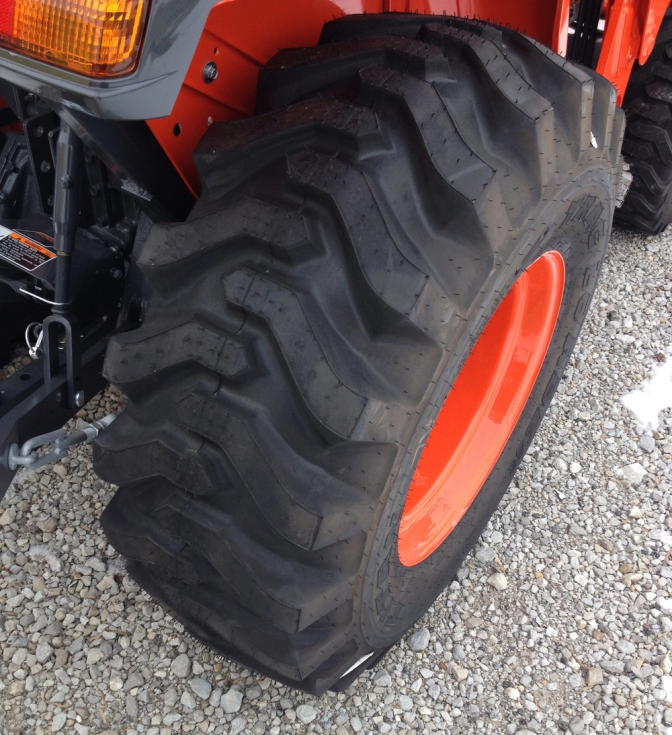 IF technology combines technical innovations in the tire carcass structure to provide maximum sidewall flexibility with a larger footprint in low pressure operation. This provides the tillage equipment with a larger contact patch with the soil, which increases the flotation and allows even distribution of the load at low pressure.
IF technology combines technical innovations in the tire carcass structure to provide maximum sidewall flexibility with a larger footprint in low pressure operation. This provides the tillage equipment with a larger contact patch with the soil, which increases the flotation and allows even distribution of the load at low pressure.
More
Made by BKT: Multimax MP 522 - a tire for agricultural and industrial trucks
Multimax MP 522 is an all-round tire that rolls confidently on a variety of road surfaces - even the most uneven ones. It is designed for backhoe loaders, compact loaders and telehandlers. It can be used for excavation and loading operations.
More
Complete and Dual Wheel Tire Inflation Manual for Agricultural Machinery
Do not operate machinery with extra wheels on spacers when the set pressure in the outer tire is greater than or equal to the tire pressure on the inner wheel. The minimum pressure difference must be 0. 5 bar down in the outer tire.
5 bar down in the outer tire.
More
Made by BKT: Agrimax RT 765 is a heavy duty tractor tire
Agrimax RT 765 is a tire for modern heavy duty tractors and combine harvesters. Strong and durable - suitable for the latest heavy duty tractors including tillage, field and road hauling, vineyard harvesting and spraying.
More
Made by BKT: the ultimate CON STAR tire for agricultural telehandlers
Every home or farm has a job for a telehandler. And that means for tires BKT CON STAR, which are designed for loading and unloading equipment employed in the agro-industrial complex.
More
Made in BKT: AGRIMAX RT 855 - to make working in the field more comfortable
Tractor tire designed for field work and road use, but some sizes also suitable for row crops, spraying and grape harvesting .
More
Made by BKT: AGRIMAX TURF RT 333 radial tire for small tractors used in horticulture, fruit nurseries and vineyards.
The main advantage of this tire is the protection of the soil from possible compaction. The AGRIMAX TURF RT 333 is equipped with an increased tread height (R-3+) that provides improved traction on the ground and guarantees a long service life.
More
BKT's quietest tires
Quiet tires are very important for farmers. Thanks to the study of the tread pattern of the AGRIMAX V-FLECTO and RIDEMAX IT 697 (M+S) tires, they are the optimal solution for those who need tires with low noise levels.
More
Made by BKT: RIDEMAX FL 690 radial flotation tire for transporting tankers, trailers and spreaders.
In response to the ever-increasing demand for load capacity in modern agriculture, CGT has developed this steel carcass tire capable of handling very heavy loads and increasing the productivity of agribusinesses.
More
What is the difference between radial and bias tyres?
When should I buy a bias tyre?
When should I buy a radial tire?
Why are radial tires increasingly being used in the field?
What does a radial tire with IF technology mean? VF?
Why would bias tires be better than radial tires when used as "work tires"?
More
Made by BKT: AW 711 - radial tires for agricultural machinery and trailers
They are suitable for hauling, haying and tillage.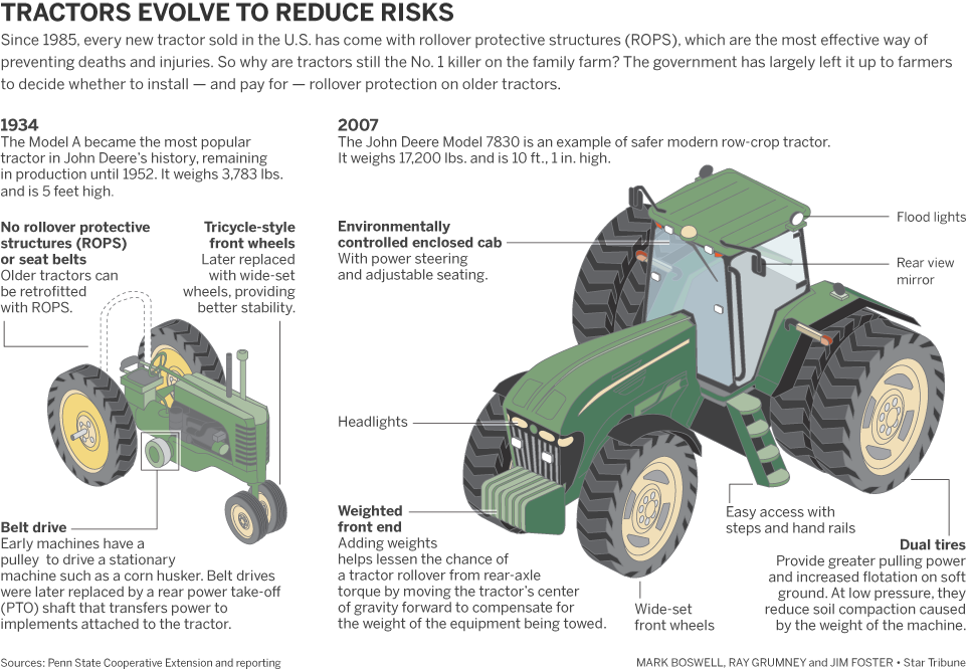 Thanks to a special tread rubber compound, AW 711 tires have a longer life, regardless of whether they are used on soft or hard surfaces.
Thanks to a special tread rubber compound, AW 711 tires have a longer life, regardless of whether they are used on soft or hard surfaces.
More
BKT mud tires for tractors, sprinklers, telehandlers.
Every farmer knows the challenges of driving on muddy and wet surfaces. But now you can forget about it, because BKT offers a line of tires that provide excellent grip on slippery ground.
More
What tires to install on the MTZ-82 tractor? Size, tire pressure, recommendations for use.
Tractor MTZ-82 (Belarus) - manufactured by the Minsk Tractor Plant (MTZ), is a universal tractor of class 1.4. The main purpose of the MTZ-82 tractor is to perform various agricultural, construction and municipal works with mounted, semi-mounted equipment and trailers.
More
Made by BKT: Agrimax Spargo - tires with IF technology for row crops.
AGRIMAX SPARGO are BKT's tires for row crops.